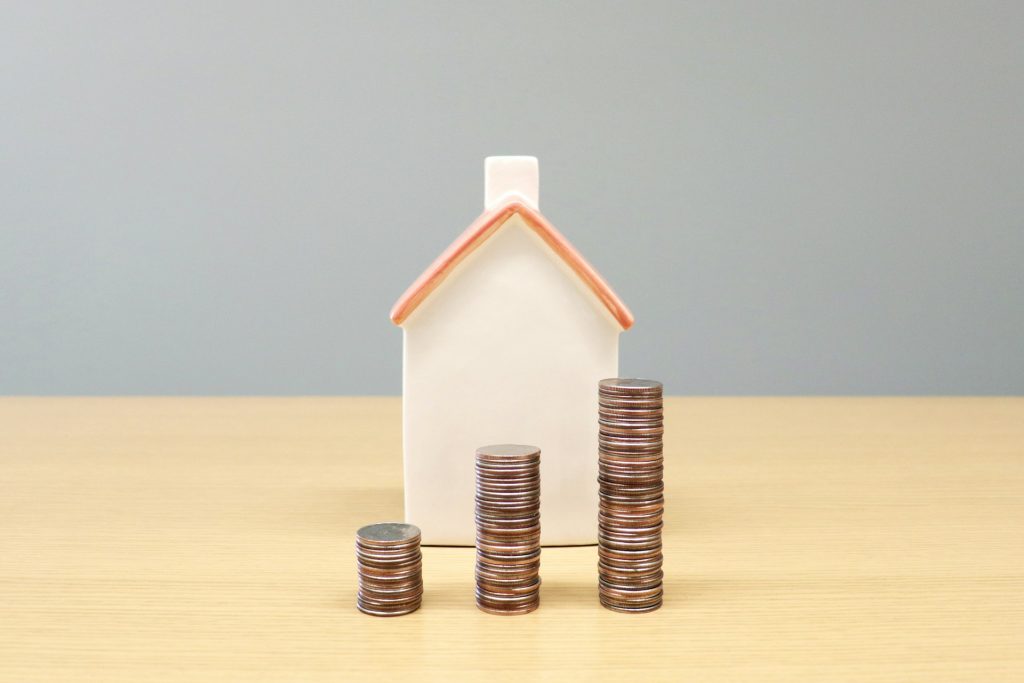Now that Anthony Albanese has started his second term as prime minister, there has been renewed focus on the housing policies the Australian Labor Party (ALP) took to the election.From 2026, the ALP promised to make the Home Guarantee Scheme available to all first home buyers; currently, it is limited to 50,000 places per year and includes income caps. “There will be no caps on how many people can apply and no limit on how much you or your partner can earn. For first home buyers, you’ll be able to buy an eligible property anywhere in Australia, with a deposit as low as 5%,” according to the ALP.To increase the supply of housing – and thereby put downward pressure on prices – the ALP promised to invest $10 billion to build up to 100,000 homes reserved only for first home buyers. “Funding will support enabling infrastructure, land purchases or construction to get these homes built – near work and family, only for first home buyers,” Labor said.Labor also promised to invest an additional:$120 million to incentivise states to remove red tape and help more homes be built faster$78 million to fast-track the qualification of 6,000 tradespeople and thereby increase the residential construction workforce$54 million to support the advanced manufacturing of prefabricated and modular homes, which can be built up to 50% faster than traditional homesNeed a home loan? Let’s chat.Hit the button below to arrange a conversation with one of my loan specialists to find a deal that's best for your situation. Chat to us today We partner with over 50 lenders so you can find the perfect solutionFollow Facebook Linkedin Do you have questions about mortgages or loans?Ask us in the comments below … [Read more...] about What housing promises did the ALP make to voters
Recent history suggests rate cut will drive refinancing surge
Market commentators are expecting a big jump in refinancing activity in the coming weeks, given that numerous borrowers switched home loans earlier in the year following the previous cash rate cut, in February, by the Reserve Bank of Australia.Equifax, a credit reporting agency, has reported that the number of mortgage applications in the first quarter of 2025 was 5.2% higher than the same quarter the year before. Refinancers played a major role in that increase, with refinancing accounting for 37% of mortgage demand in the month of March.3 key things to consider before refinancing your home loan:Review your financial position. Confirm you have enough equity in your property, a large enough income and a strong enough credit score to qualify for a new home loan. Also, make sure refinancing aligns with your goals, whether that's reducing your repayments, conducting a debt consolidation or 'cashing out' equity (e.g. to fund renovations).Do a cost-benefit analysis. Make sure the savings you would get from switching home loans would exceed the costs, which may include discharge fees, break fees, application fees and lenders mortgage insurance.Take a holistic view. When comparing loan options, it's important to look beyond the rate, because the lowest-rate loan won't always be the most suitable option for you. That's why you should also consider things like loan features and repayment flexibility.Need a home loan? Let’s chat.Hit the button below to arrange a conversation with one of my loan specialists to find a deal that's best for your situation. Chat to us today We partner with over 50 lenders so you can find the perfect solutionFollow Facebook Linkedin Do you have questions about mortgages or loans?Ask us in the comments below … [Read more...] about Recent history suggests rate cut will drive refinancing surge
Mortgage market shake-up as lenders cut interest rates
More than 65 lenders, including the big four banks, have cut their interest rates following the Reserve Bank of Australia’s decision to reduce the cash rate from 4.10% to 3.85%.This will mean lower repayments for the typical variable-rate borrower – although the size of the rate cuts, and the dates at which they’re taking effect, is varying from lender to lender. Here are three tips to bear in mind in this downward interest rate environment:Think about refinancing. If your lender is not making the right competitive moves with your interest rate, I can compare the market for you and search for better options.Review your new borrowing power. Lower interest rates can increase how much you can borrow, which may open up new opportunities to upsize, renovate or invest. Just be careful not to overextend yourself.Use your savings wisely. Consider what you do with the money you save with a lower rate. Splurging on treats may be satisfying, but investing the money, making extra repayments on your loan or building the balance in your offset account may be a smarter long-term option.Confused about your loan options? Let’s chatHit the button below to arrange a conversation with one of my loan specialists to find a deal that's best for your situation. Chat to us today We partner with over 50 lenders so you can find the perfect solutionFollow Facebook Linkedin Do you have questions about mortgages or loans?Ask us in the comments below … [Read more...] about Mortgage market shake-up as lenders cut interest rates
Homebuilding cost growth falls to 15-year low
Residential construction costs rose just 0.4% in the March quarter, which was the lowest quarterly increase since 2010, according to the Cordell Construction Cost Index. As a result, annual cost growth fell from 4.0% in the December quarter to 3.4% in the March quarter.However, building costs have risen 31.3% since the start of the pandemic in March 2020, so this slowdown in price growth is coming off a high base.Builders are struggling to cope with higher supply costs and a shortage of skilled tradespeople. That said, there is plenty of homebuilding activity taking place around the country. Multinational construction group RLB reported there were 487 residential construction cranes operating during the first quarter of 2025. While this was 9.8% lower than the 540 residential cranes from the year before, it was still high by historical standards.Please contact me if you're thinking about building a home. I can help you secure a pre-approval for a construction loan, which will give you clarity around your budget. I can also explain how construction loans work, so you can begin the process with confidence.Let’s chat about your construction loan optionsHit the button below to arrange a conversation with one of my loan specialists to find a deal that's best for your situation. Chat to us today We partner with over 50 lenders so you can find the perfect solutionFollow Facebook Linkedin Do you have questions about mortgages or loans?Ask us in the comments below … [Read more...] about Homebuilding cost growth falls to 15-year low
Two-thirds of property investors are negatively geared
Surveys of property investors have confirmed that although investing can be a fantastic way to build long-term wealth, investors need to be prepared to weather periods of negative cash flow, especially in the early years.The Property Investment Professionals of Australia (PIPA) found that 65% of the investors they surveyed were negatively geared in 2024, up from 57% in 2023.PIPA chair Nicola McDougall said the results confirmed that being a property investor involves both upsides as well as challenges.“Interest rates remain significantly higher than they were a few years ago and, while rents have risen, they are a drop in the ocean compared to higher lending costs,” she said.If you're a property investor, here are five tips for managing your financial position:Build a cash buffer to cover periods of negative cash flowFactor in rising interest rates when budgeting future costsWork with an accountant to maximise your tax deductionsReview your loan on a regular basis to ensure it's still competitiveSpeak with a mortgage broker to explore refinancing or restructuring optionsIf you’re thinking about buying an investment property or ensuring an existing investment loan is structured correctly, I can help.Let’s talk property investmentHit the button below to arrange a conversation with one of my loan specialists to find a deal that's best for your situation. Chat to us today We partner with over 50 lenders so you can find the perfect solutionFollow Facebook Linkedin Do you have questions about mortgages or loans?Ask us in the comments below … [Read more...] about Two-thirds of property investors are negatively geared
Inflation remains within RBA’S target range
The latest inflation data, which were recorded before the USA's recent series of tariff announcements, show further progress in the battle against inflation, making future interest rate cuts more likely.The annual headline inflation rate fell from 2.5% in January to 2.4% in February, according to the Australian Bureau of Statistics, which was the seventh consecutive month it had been within the Reserve Bank of Australia's (RBA) target range of 2-3%.Also, the annual trimmed mean inflation rate (which the RBA regards as more reliable, because it excludes items with wild price swings from inflation calculations) fell from 2.8% in January to 2.7% in February, which was the third consecutive month it had been within the target range. The RBA has kept interest rates quite high over the past three years, in order to reduce demand from the economy and put downward pressure on inflation.If the RBA believes inflation is now under control, it may consider reducing the cash rate at its next monetary policy meeting in May, which would prompt lenders to reduce their mortgage rates. That said, the RBA may place even greater weight on the global instability caused by the tariff issue when deciding whether to change the cash rate.Need a home loan? Let’s chat.Hit the button below to arrange a conversation with one of my loan specialists to find a deal that's best for your situation. Chat to us today We partner with over 50 lenders so you can find the perfect solutionFollow Facebook Linkedin Do you have questions about mortgages or loans?Ask us in the comments below … [Read more...] about Inflation remains within RBA’S target range
Most home loan customers could withstand a financial downturn: RBA
The Reserve Bank of Australia (RBA) has found “the vast majority of borrowers would remain able to service their debt under a range of plausible economic scenarios”, according to the central bank's latest Financial Stability Review.Crucially, about 97% of borrowers have positive cash flow, which means they’re able to meet their mortgage commitments and potentially get ahead on their mortgage.Furthermore, less than 1% of borrowers are currently in negative equity (i.e. their property is worth less than their outstanding mortgage), which is “a meaningful improvement” from before the pandemic. “Large liquidity and equity buffers would enable most households to navigate a period of higher-than-expected inflation and interest rates or a significant deterioration in the labour market,” the RBA said.“Even when faced with a severe 30% decline in housing prices, around 9 in 10 mortgagors would still have positive equity. These borrowers could sell their home – albeit a disruptive and last resort solution – for at least the outstanding balance of their loan if faced with severe stress.”Everyone has a unique scenario, which is why it's important to talk to an expert about your specific situation. If you're struggling to meet your repayments, your mortgage broker and lender can help.Need a home loan? Let’s chat.Hit the button below to arrange a conversation with one of my loan specialists to find a deal that's best for your situation. Chat to us today We partner with over 50 lenders so you can find the perfect solutionFollow Facebook Linkedin Do you have questions about mortgages or loans?Ask us in the comments below … [Read more...] about Most home loan customers could withstand a financial downturn: RBA
How prices, rents and rates have changed over the past five years
Five years on from the start of the covid-19 pandemic, the property market is in a very different place.When the pandemic started, some banks predicted a crash in property prices. Instead, the national median price fell just 1.7%, before rebounding. By March 2025, the national median was 38.4% higher than in March 2020, according to CoreLogic. That included an increase of 56.3% in the combined regions and 33.6% in the combined capitals.Meanwhile, the median rent in March 2025 was 37.6% higher than five years earlier. House rents (38.7%) and unit rents (35.1%) recorded similar growth in that period, even though, in the early days of the pandemic, unit rents fell sharply due to the big drop in demand from international students.The interest rate picture has also changed significantly over the past five years. The cash rate was just 0.75% before the pandemic; the Reserve Bank of Australia (RBA) then reduced the cash rate not once but twice in March 2020, to 0.25%, before reducing the cash rate again in November 2020, to a record-low 0.10%. In 2022, the RBA started reversing course; as of March 2025, the cash rate was 4.10%.Need a home loan? Let’s chat.Hit the button below to arrange a conversation with one of my loan specialists to find a deal that's best for your situation. Chat to us today We partner with over 50 lenders so you can find the perfect solutionFollow Facebook Linkedin Do you have questions about mortgages or loans?Ask us in the comments below … [Read more...] about How prices, rents and rates have changed over the past five years






